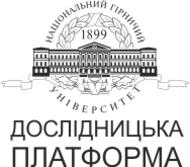№78-17
Improving the risk management process according to ISO 31000:2018 and with the implementation of Industry 5.0 principles
V. Tsopa1, S. Cheberiachko2,3, I. Lutsenko2, O. Deryugin2, O. Shustov2, L. Cheberiachko2
1 МІМ-Kyiv, Kyiv, Ukraine
2 Dnipro University of Technology, Dnipro, Ukraine
3 Technical University "Metinvest Polytechnic" LLC, Zaporizhzhia, Ukraine
Coll.res.pap.nat.min.univ. 2024, 78:197–210
Full text (PDF)
https://doi.org/10.33271/crpnmu/78.197
ABSTRACT
Purpose. Improving the risk management process according to the ISO 31000:2018 standard, taking into account the principles of Industry 5.0.
The methods. To achieve the goal, the induction method was used, according to which, on the basis of knowledge about the individual principles of risk assessment given in the ISO 31000:2018 standard, an attempt was made to transfer them to the general process of risk assessment in Industry 5.0.
Findings. The principles of Industry 5.0 development and risk management principles according to ISO 31000:2018 were analyzed, which made it possible to establish their synergistic relationships to increase the effectiveness and efficiency of hazard risk management through the use of Industry 5.0 principles: virtualization, interoperability, and decentralization. A comparison of risk management principles with Industry 5.0 principles was made to identify relationships that will synergistically increase the effectiveness and efficiency of hazard risk management through the use of Industry 5.0 principles, which will significantly expand the capabilities of the risk management process. Recommendations have been developed to improve the management process taking into account the principles of Industry 5.0, which create conditions for the exchange of information between man and machine based on a virtual factory environment, analysis of the safety of machine-human communication via the Internet of Things, and decision-making on substantiating the choice of protective and preventive measures by artificial intelligence, regardless of human activity. The risk management process has been improved through changes that involve the study of human-machine interaction.
The originality. Relationships were established between the existing risk management principles according to the ISO 31000:2018 standard and the principles of developing Industry 5.0, which allowed us to improve the management process.
Practical implementation. The practical implementation lies in the analysis of the main stages of the development and implementation of the risk management structure in the organization according to ISO 31000:2018.
Keywords: principles, risk, employee health, Industry 5.0.
References
1. Standard ISO 31000:2018. Risk Management Guidelines. (2018). https://www.iso.org/iso-31000-risk-management.html
2. StandardISO/IEC 31010:2019. Risk Management—Risk Assessment Techniques. (2019). https://www.iso.org/standard/72140.html
3. Filippetti A., Gkotsis P., Vezzani A., & Zinilli A. (2019). How to survive an economic crisis? Lessons from the innovation profiles of EU regions. Seville, Spain: European Commission. https://iri.jrc.ec.europa.eu/sites/default/files/contentype/publication/reports/1568800248/How%20to%20survaive%20an%20economic%20crisis.pdf
4. Folch-Calvo, M., Brocal-Fernández, F., González-Gaya, C., & Sebastián, M.A. (2020). Analysis and Characterization of Risk Methodologies Applied to Industrial Parks. Sustainability, 12, 7294. https://doi.org/10.3390/su12187294
5. Soori, M., Arezoo, B., & Dastres, R. (2023). Internet of things for smart factories in industry 4.0, a review. Internet of Things and Cyber-Physical Systems, 3, 192–204. https://doi.org/10.1016/j.iotcps.2023.04.006
6. Akundi, A., Euresti, D., Luna, S., Ankobiah, W., Lopes, A., & Edinbarough, I. (2022). State of Industry 5.0 - Analysis and Identification of Current Research Trends. Applied System Innovation, 5(1), 27. https://doi.org/10.3390/asi5010027
7. Zizic, M.C., Mladineo, M., Gjeldum, N., & Celent, L. (2022). From Industry 4.0 towards Industry 5.0: A Review and Analysis of Paradigm Shift for the People, Organization and Technology. Energies, 15(14), 5221. https://doi.org/10.3390/en15145221
8. Golovianko, M.,Terziyan, V., Branytskyi, V., & Malyk, D. (2023). Industry 4.0 vs. Industry 5.0: Co-existence, Transition, or a Hybrid. Procedia Computer Science, 217, 102–113. https://doi.org/10.1016/j.procs.2022.12.206
9. Gladysz, B., Tran, T.a., Romero, D., van Erp, T., Abonyi, J., & Ruppert, T. (2023). Current development on the Operator 4.0 and transition towards the Operator 5.0: A systematic literature review in light of Industry 5.0. Journal of Manufacturing Systems, 70, 160–185. https://doi.org/10.1016/j.jmsy.2023.07.008
10. Adel, A.(2022).Future of industry 5.0 in society: Human-centric solutions, challenges and prospective research areas. Journal of Cloud Computing, 11, 40. https://doi.org/10.1186/s13677-022-00314-5
11. Wang, B., Zhou, H., Li, X., Yang, G., Zheng, P., Song, C., Yuan, Y., Wuest, T., Yang, H., & Wang, L. (2024). Human Digital Twin in the context of Industry 5.0. Robotics and Computer-Integrated Manufacturing, 85, 102626.https://doi.org/10.1016/j.rcim.2023.102626
12. Sindhwani, R., Afridi, S., Kumar, A., Banaitis, A., Luthra, S., & Singh, P.L. (2022). Can industry 5.0 revolutionize the wave of resilience and social value creation? A multi-criteria framework to analyze enablers. Technology in Society, 68, 101887. https://doi.org/10.1016/j.techsoc.2022.101887
13. Longo, F., Padovano, A., & Umbrello, S. (2020). Value-Oriented and Ethical Technology Engineering in Industry 5.0: A Human-Centric Perspective for the Design of the Factory of the Future. Applied Sciences, 10(12), 4182. https://doi.org/10.3390/app10124182
14. Crombez,G. (2022). Introduction to Volume 8: Health Psychology. Comprehensive Clinical Psychology (Second Edition), lvii-lviii. https://doi.org/10.1016/B978-0-12-818697-8.02008-2
15. Lutgendorf,S.K., & Costanzo,E.S.(2003). Psychoneuroimmunology and health psychology: An integrative model. Brain, Behavior, and Immunity, 17(4), 225–232. https://doi.org/10.1016/S0889-1591(03)00033-3
16. Adib-Hajbaghery, M., & Faraji, M. (2015). Comparison of Happiness and Spiritual Well-Being among the Community Dwelling Elderly and those who Lived in Sanitariums. International Journal of Community Based Nursing and Midwifery, 3(3), 216–226. https://europepmc.org/article/med/26171410
17. Ghobakhloo, M., Iranmanesh, M., Mubarak, M.F., Mubarik, M., Rejeb, A., Nilashi, M. (2022). Identifying industry 5.0 contributions to sustainable development: A strategy roadmap for delivering sustainability values. Sustainable Production and Consumption, 33, 716–737. https://doi.org/10.1016/j.spc.2022.08.003
18. Grabowska, S., Saniuk, S. & Gajdzik, B. (2022). Industry 5.0: improving humanization and sustainability of Industry 4.0. Scientometrics, 127, 3117–3144. https://doi.org/10.1007/s11192-022-04370-1
19. Moroa, S., Cauchick-Miguela, P., de Sousa-Zomerb, T., & de Sousa Mendesc, G. (2023). Design of a sustainable electric vehicle sharing business model in the Brazilian context.International Journal of Industrial Engineering and Management, 14, 147161. http://ijiemjournal.uns.ac.rs/
20. Jankovic-Zugic, A., Medic, N., Pavlovic, M., Todorovic, T., & Rakic, S. (2023). Servitization 4.0 as a Trigger for Sustainable Business: Evidence from Automotive Digital Supply Chain. Sustainability, 15(3), 2217. https://doi.org/10.3390/su15032217
21. Sofic, A., Rakic, S., Pezzotta, G., Markoski, B., Arioli, V., & Marjanovic, U. (2022). Smart and Resilient Transformation of Manufacturing Firms. Processes, 10(12), 2674. https://doi.org/10.3390/pr10122674
22. Dave, D.M. (2023). Advancing Resilience and Agility in Manufacturing through Industry 5.0: A Review of Digitization, Automation, and Advanced Analytics. International Journal of New Technology and Research, 9, 5–12. http://dx.doi.org/10.31871/IJNTR.9.6.22




